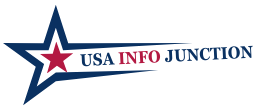A Comprehensive Guide to Zero Interest Home Improvement Loans

Table of Contents
Introduction
Getting a home renovation journey is both thrilling and daunting, but financing it without interest charges can make the dream more attainable. Zero interest home improvement loans offer a financial haven for homeowners, and understanding them is crucial. In this guide, we’ll explore the intricacies of zero interest loans, explore alternative financing options, eligibility criteria, outline steps to acquire zero percent financing, and weigh their benefits against challenges. (Image Credit: PreePik)
Let's Understand Zero Interest Home Improvement Loans
Zero interest home improvement loans are specialized loans designed to assist homeowners in upgrading their properties without incurring interest charges. Typically offered by non-profit organizations and government entities, these loans aim to support community development and housing preservation.
Eligibility Criteria
Eligibility for zero interest home improvement loans varies but often targets low-income families, seniors, and residents in specific neighborhoods. Key factors include income, property value, and equity. Some programs may have income-based eligibility criteria and restrictions on property types and usage.
Factors to Consider
Before choosing any zero interest home improvement loan, following factors are to be considered:
Covered Renovations: Loans may have restrictions on the types of renovations covered, so it’s important to review the terms carefully.
Repayment Terms: Some programs may require repayment upon selling the home within a designated time frame.
Steps to Get a Zero Interest Home Improvement Loan
- Research: Identify available zero interest loan programs through state housing finance agencies, non-profits, or municipal governments.
- Check Eligibility: Review eligibility criteria, including income, property value, and intended use of funds.
- Gather Documentation: Prepare necessary documents, including proof of income, property ownership, and renovation plans.
- Apply: Submit your application along with supporting documentation to the lending agency.
- Approval and Funding: Await approval and funding of your loan. Funds may be disbursed directly to contractors or as reimbursements.
Benefits and Challenges of Zero Interest Home Improvement Loans
Benefits:
- Cost Savings: Avoidance of interest charges can save homeowners significant amounts over the life of the loan.
- Community Support: Zero interest loans contribute to community development and housing preservation.
Challenges:
- Limited Availability: Zero interest loans may have limited availability and stringent eligibility criteria.
- Restricted Usage: Some programs impose restrictions on the types of renovations covered or require homeowners to remain in their homes for a specified period.
Alternatives to Zero Interest Home Improvement Loans
1. Home Equity Lines of Credit (HELOCs):
Advantages: HELOCs offer flexibility and accessibility. They allow homeowners to borrow against the equity in their homes, providing a revolving line of credit similar to a credit card.
Disadvantages: Variable interest rates are a key drawback of HELOCs. As interest rates fluctuate, so do monthly payments, potentially increasing the overall cost of borrowing over time.
2. Personal Loans:
Advantages: Personal loans do not require collateral, making them accessible to a wider range of borrowers. They offer a lump sum of money that can be used for various purposes, including home renovations.
Disadvantages: Personal loans often come with higher interest rates compared to secured loans like home equity loans. This can result in higher overall borrowing costs, especially for larger renovation projects.
3. Cash-Out Refinancing:
Advantages: Cash-out refinancing involves replacing an existing mortgage with a new one that has a higher principal balance, allowing homeowners to cash out the difference. This can provide access to a significant sum of money for renovations.
Disadvantages: Cash-out refinancing increases the total mortgage debt, potentially extending the repayment period and increasing overall interest costs. Additionally, homeowners risk losing equity built up in the property if property values decline or if they sell the home before building substantial equity in the new mortgage.
Conclusion:
Zero interest home improvement loans offer a promising avenue for homeowners to finance renovations without interest charges. However, they come with eligibility criteria and restrictions. Exploring alternative financing options and understanding their benefits and challenges is essential. By weighing these factors and following the necessary steps, homeowners can make informed decisions to finance their renovation projects effectively and achieve their dream homes. With careful planning and research, you can navigate the complexities of home renovation financing and turn your vision into reality.
If you wish to read more similar articles. Click here
Frequently Asked Questions
No, these loans are typically targeted at specific groups, such as low-income families and seniors. Eligibility criteria vary depending on the program.
Not necessarily. Some programs may have restrictions on the types of renovations covered, so it’s important to review the terms carefully.
Some programs may require repayment of the loan upon selling the home within a designated time frame.
Zero interest home improvement loans offer the advantage of no interest charges, but they may have limited availability and eligibility criteria compared to alternatives like HELOCs and cash-out refinancing.
